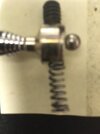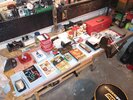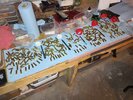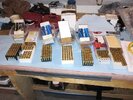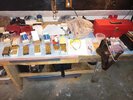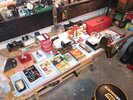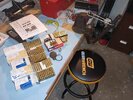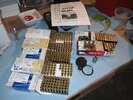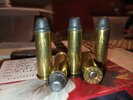Getting set up to do a batch of .38 Special on my Dad's old Herter's press. I think in the back there is an RCBS Turret press I might get set up for this at some point.
I think it is 315 cases if I did my math right
75 S&B, Once Fired
50 Magtech, OF
25 Winchester, OF
50 Federal, OF
50 Starline, New
40 Winchester - primed, OF
25 - CBC stamped in a Federal box - primed, OF
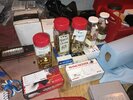
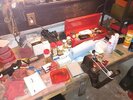
I cleaned then deprimed and sized everything recently, the primed cases I left flared and primed ready to load maybe a few years ago. I think I'll just get everything up to the same point in the process prepped and primed and flared, and then load all of it at the same time.
the firing end of the process is a new Taurus 856UL 3" Barrel and a S&W 10-7 4" Barrel - which is at the gunsmith getting a new hand to sure up the timing
Figired I'd share how I do this and my guess is I probably get a lot better at it and pick up a few more tricks.
I think it is 315 cases if I did my math right
75 S&B, Once Fired
50 Magtech, OF
25 Winchester, OF
50 Federal, OF
50 Starline, New
40 Winchester - primed, OF
25 - CBC stamped in a Federal box - primed, OF


I cleaned then deprimed and sized everything recently, the primed cases I left flared and primed ready to load maybe a few years ago. I think I'll just get everything up to the same point in the process prepped and primed and flared, and then load all of it at the same time.
the firing end of the process is a new Taurus 856UL 3" Barrel and a S&W 10-7 4" Barrel - which is at the gunsmith getting a new hand to sure up the timing
Figired I'd share how I do this and my guess is I probably get a lot better at it and pick up a few more tricks.


